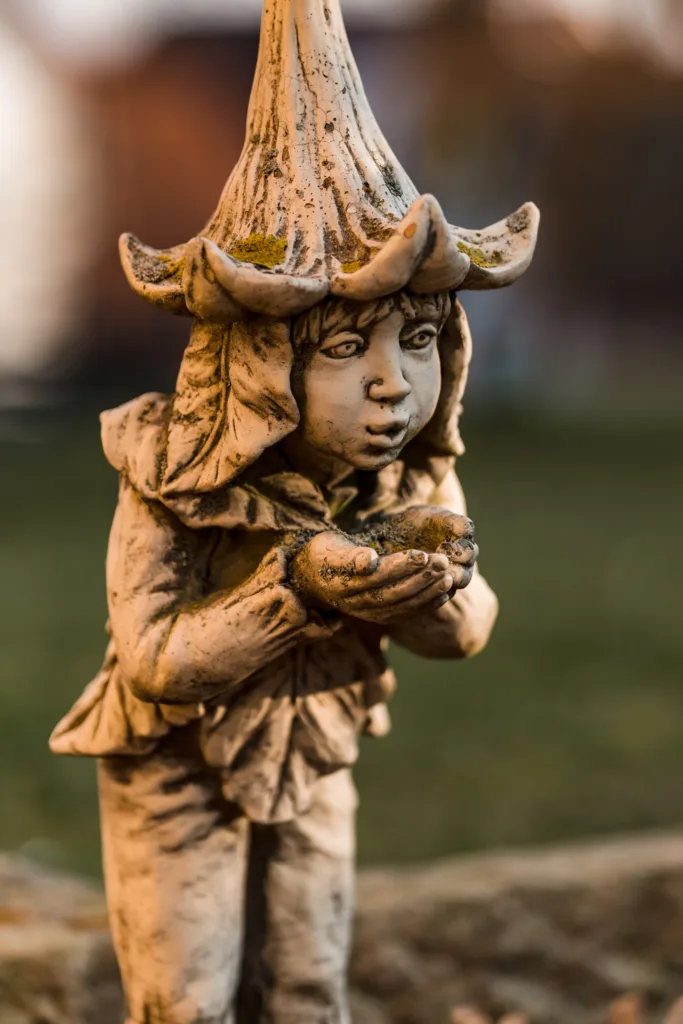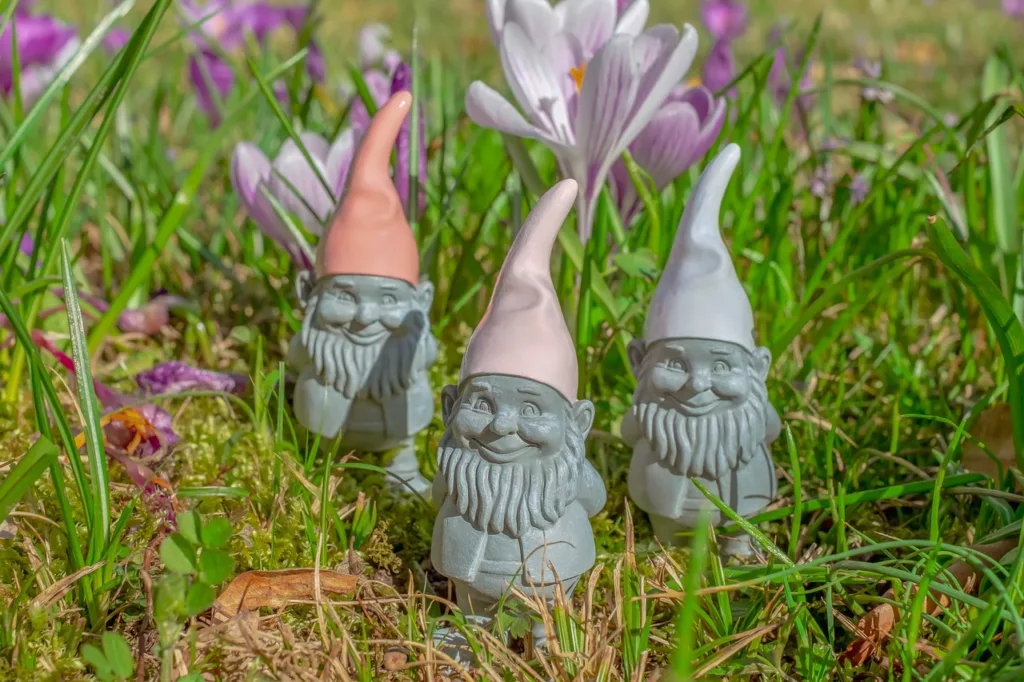Duendes, mythical creatures from Latin American and Spanish folklore, have captivated the imaginations of people for centuries. These elf-like beings are known for their mischievous nature and their ability to either help or cause trouble. In different regions, duendes take on various forms and have unique characteristics.
One popular representation of duendes can be found in the South American country of Ecuador, where they are known as El Duende. In Ecuadorian folklore, El Duende is often portrayed as a small, gnome-like creature with a mischievous personality. This creature is said to reside in people’s homes and is believed to be the owner of the house itself.
In Mexico, duendes are believed to live inside the walls of homes. They are known to collect the toenail clippings of children, which they use for unknown purposes. These duendes are often described as small, elf-like creatures with a playful demeanor.
Another intriguing duende character originates from Belizean folklore. This particular duende, also known as El Duende, is said to be about three feet tall and possesses a distinct diabolical touch. El Duende is known to play tricks on people, often leading them astray or causing confusion.
Lorca, a renowned Spanish poet and playwright, envisioned duende as a powerful force that transcends rationality and taps into the depths of human emotions. According to Lorca, duende is characterized by its earthiness, an awareness of death, and a touch of the diabolical. It is a force that can be found in artistic expression, particularly in flamenco music and dance.
The concept of duende encapsulates the raw and irrational aspects of human existence. It is a force that brings forth intense emotions and connects individuals to their true selves. Duende is often associated with the darker side of life, acknowledging the inevitability of death and embracing the mysteries of the unknown.
While duendes are mythical creatures, they hold a significant place in the cultural fabric of Latin America and Spain. They represent a connection to the supernatural and serve as a reminder of the power of the human imagination. Whether they are seen as mischievous beings or as a source of inspiration, duendes continue to captivate and intrigue people across different cultures.
Duendes are mythical creatures that have been part of Latin American and Spanish folklore for centuries. They are often portrayed as elf-like beings with mischievous personalities. In different regions, duendes take on various forms and have unique characteristics. The concept of duende, as envisioned by Lorca, encompasses the irrational, earthy, and diabolical aspects of human existence. Duendes serve as a connection to the supernatural and provide a source of inspiration and intrigue in cultural traditions.
What Does It Mean If You See A Duende?
If you see a duende, it can hold various meanings depending on the cultural context. In Spanish folklore, a duende refers to a mythical creature or spirit that is often mischievous and elusive. It is believed to inhabit natural settings such as forests, caves, or old houses. Seeing a duende can be seen as a supernatural encounter or a glimpse into the spirit world.
In the context of Lorca’s concept of duende, seeing a duende can have a deeper symbolic significance. Duende, as defined by Lorca, is a dark and mysterious force that is often associated with art and creativity. It represents a heightened state of emotion and authenticity in artistic expression. Therefore, seeing a duende can be seen as a powerful and transformative experience, indicating a connection to the depths of human expression and the true essence of art.
In this sense, encountering a duende can be interpreted as a sign of inspiration, a moment of artistic breakthrough, or a confirmation of one’s creative abilities. It may signify a profound connection with one’s innermost emotions, a sense of being in touch with the raw and primal aspects of human existence. It can be a reminder to embrace the irrational, the earthy, and the passionate in one’s artistic endeavors.
It is important to note that the concept of duende is highly subjective and personal, and its interpretation may vary from individual to individual. Some may perceive seeing a duende as a spiritual encounter, while others may view it as a metaphorical representation of their own creative journey. Ultimately, the meaning of seeing a duende depends on one’s beliefs, cultural background, and personal experiences.
Seeing a duende can carry different meanings depending on the cultural context and individual interpretation. It can symbolize a supernatural encounter, a connection to the spirit world, or a transformative experience in the realm of art and creativity. It is up to the individual to find personal significance in such an encounter and explore its deeper implications.

Where Can Duendes Be Found?
Duendes can be found in various regions around the world, particularly in Latin America, Spain, and Europe. They are most commonly associated with the folklore and mythology of these areas. Specifically, in South America, duendes are popularly known as “El Duende” in Ecuador, where they are deeply ingrained in the cultural traditions.
In Ecuador, El Duende is believed to inhabit natural landscapes such as forests, mountains, and rivers. They are said to dwell in hidden places, using their magical powers to guard the environment and its inhabitants. These mythical creatures are often described as small, mischievous beings with pointy ears and hats, who are known for their playful and sometimes prankster nature.
It’s important to note that duendes are not limited to Ecuador alone. In Spain, for example, they are referred to as “duendes,” and are known to be present in various aspects of Spanish folklore, including literature, art, and music. Similarly, other countries in Latin America, such as Mexico and Argentina, also have their own versions of duendes, each with their own unique characteristics and stories.
Duendes can be found in different cultural contexts, representing a diverse range of mythical creatures with similar traits and attributes. Their presence is deeply rooted in the folklore and traditions of the regions where they are celebrated, adding to the rich tapestry of global mythology.
What Is A Duende Elf?
A duende elf, also known as a duende, is a mythical creature that is typically found in Latin American folklore. These creatures are often believed to be small, elf-like beings that can either bring good fortune or cause mischief and trouble. The word “duende” itself translates to “elf” or “goblin” in English.
Duendes are said to reside in various places, depending on the cultural beliefs of different regions. For example, in Mexico, it is believed that duendes live inside the walls of homes. They are considered the owners of the house and are said to protect it from evil spirits. In other regions, duendes may be associated with forests, caves, or other natural environments.
These mythical creatures are often described as being small in stature, with pointy ears and mischievous expressions. They are known for their agility and ability to move swiftly. Duendes are believed to have magical powers, which they can use to either help or hinder humans.
In some stories, duendes are seen as benevolent creatures who bring good luck and protect their human companions. They may leave small gifts or perform helpful tasks around the house. However, if angered or disrespected, duendes can become mischievous and cause trouble. They may play pranks, hide belongings, or create disturbances in the household.
It is important to note that the concept of duendes varies across different countries and cultures in Latin America. The characteristics and behaviors attributed to these creatures can differ, but the common thread is that they are mystical beings that exist in folklore and are believed to have an impact on human lives.
A duende elf is a mythical creature found in Latin American folklore. These small, elf-like beings can either bring good fortune or cause mischief and trouble. They are believed to reside in various places, such as homes or natural environments, and are known for their magical powers and mischievous nature.
How Tall Are Duendes?
Duendes, according to Belizean folklore, are believed to be approximately three feet tall. These mythical creatures, also known as dwarves or goblins, are said to possess magical powers and inhabit various regions of Belize. They are often described as small, humanoid beings, typically standing at a height of about three feet. Duendes have been an integral part of the local folklore for generations, with numerous stories and legends revolving around their mischievous nature and interactions with humans.

Conclusion
Duendes are mythical creatures that have been a part of Latin American folklore for centuries. These elf-like beings are believed to either bring good fortune or cause mischief, depending on their mood. They are often associated with the supernatural and possess a range of characteristics, including irrationality, earthiness, an awareness of death, and a touch of the diabolical.
In different countries and regions, duendes have their own unique traits and roles. In Ecuador, for example, they are known as “El Duende” and are considered the owners of the house. In Mexico, duendes are believed to reside inside the walls of homes, collecting children’s toenail clippings. Meanwhile, in Belizean folklore, El Duende is described as a three-foot-tall creature.
Duendes embody the mysterious and enchanting aspects of Latin American culture. They serve as a reminder of the deep connection between humans and the supernatural world. Whether seen as mischievous or benevolent, duendes continue to captivate the imagination and intrigue people across the region. Their presence adds an element of magic and wonder to the rich tapestry of Latin American folklore.
